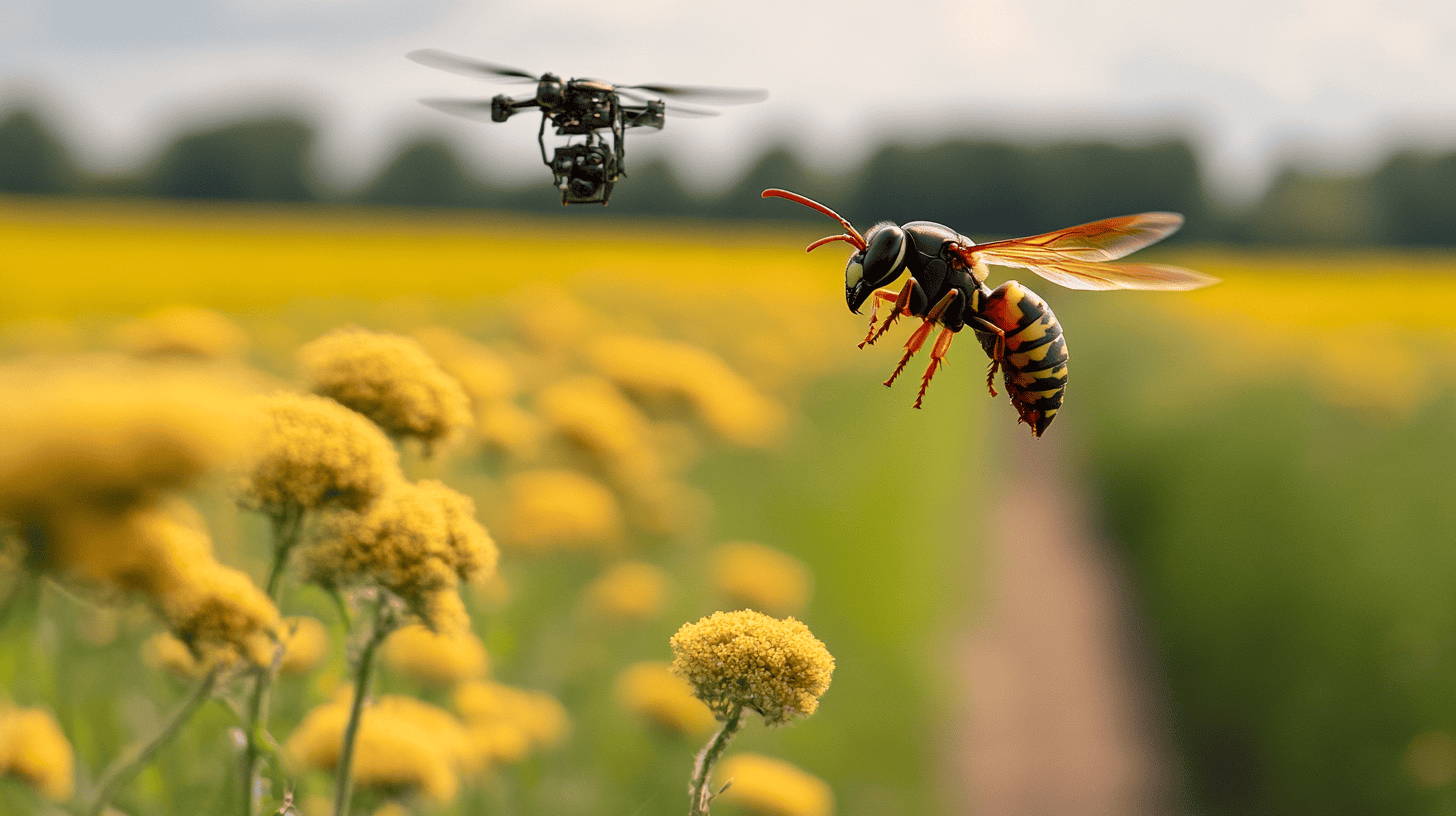
A groundbreaking method developed in Twente, Netherlands, is revolutionizing the fight against invasive Asian hornets. Robor Electronics, founded by brothers Roger and Xander Borre, has created an ultra-lightweight tracking device weighing just 0.16 grams. This innovative technology allows beekeepers to locate and destroy hornet nests, protecting vital bee populations.
The Asian hornet, capable of consuming up to 75 bees daily, poses a significant threat to biodiversity and agriculture. With the ability to expand territory by 100 km annually, these hornets have become a pressing concern across Europe. This Dutch innovation offers a beacon of hope in the ongoing battle to preserve our crucial pollinators.
Innovative tracking technology
Developed by Robor Nature – the ‘nature’ branch of Robor Electronics, the new system leverages advanced micro-transmitter technology to track Asian hornets. The transmitter, weighing less than 160 mg, can be easily and quickly attached to a hornet. This process, requiring no sedation, takes a mere five seconds. Once attached, the hornet can be immediately released back into the environment, ensuring minimal disruption to its natural behaviors.
The system includes a specialized receiver designed for use with drones. This receiver significantly increases the sensitivity and range of hornet nest detection, extending up to 2 kilometers. This enhancement greatly improves the efficiency and accuracy of locating hornet nests, making it easier for users to track and manage the invasive species.
Complementing the tracking system is the Hornet-App. This smartphone application allows users to participate in the search for hornet nests. By utilizing the mobile network, the app provides real-time updates and alerts, helping users pinpoint the locations of nests.

The threat
The Asian hornet, originating from China, has been spreading across Europe since its accidental introduction. Experts agree that a sting may be more painful than that of a regular wasp – however, unless you are allergic, one sting is harmless. The concern is primarily on the ecological impact of their arrival. The Asian hornet preys on honey bees and other pollinators, posing a severe threat to biodiversity and agriculture.
Pollinators like bees or butterflies are responsible for over 80% of the continent’s crops and wild plants, contributing an estimated €22 billion annually to European agriculture. Bee loss due to hornet predation could have severe economic and ecological consequences.
The Asian hornet is not only an invasive species in the Netherlands. It has spread to various European countries, including France, the UK, and Spain, where a farmer has died from the result of numerous stings after an encounter with their hive.
A practical solution
One of the standout features of Robor Nature’s system is its affordability. Both the transmitters and receivers are significantly cheaper than existing solutions on the market. This cost-effectiveness makes the technology accessible to a wider range of users, including individual fruit growers and larger ecological management organizations.
The success of Robor Electronics’ tracking device has opened new possibilities for managing invasive species. By enabling the precise location of nests, this technology allows for targeted interventions, reducing the hornet population without the widespread use of pesticides. As the device gains more recognition, it could become a standard tool in the fight against the Asian hornet across Europe.

